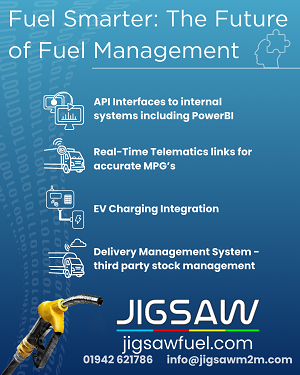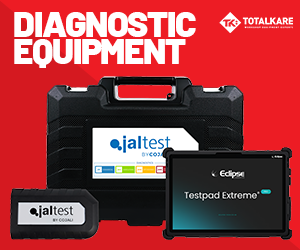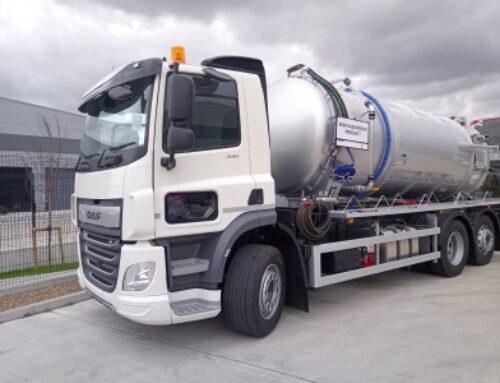Buses and RCVs benefit from Allison xFE transmissions
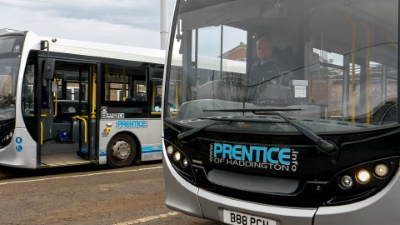 Multi-award-winning Scottish bus and coach operator Prentice of Haddington has installed Allison xFE (for extra fuel economy) fully automatic transmissions into several of its ADL Enviro 200 buses.
Multi-award-winning Scottish bus and coach operator Prentice of Haddington has installed Allison xFE (for extra fuel economy) fully automatic transmissions into several of its ADL Enviro 200 buses.
The buses’ standard automated manual transmissions (AMTs) have been upgraded to Allison fully automatic xFE transmissions in a bid to save costs over the remaining life of the vehicles and enhance the travelling experience for drivers and passengers.
The upgrades began in January 2023 after the East Lothian-based company learned of savings gained by other British bus fleets who adopted the technology.
“We prefer Allison because their transmissions are very smooth, relatively simple, nice and easy for drivers to use and give us very little trouble,” said Ross Prentice, owner and managing director, Prentice of Haddington.
“We’d been wanting to move this current fleet over to fully automatics for some time, and we’d heard about the fuel economy advantages of the xFE range. Since switching, we’ve noticed a substantial improvement in fuel consumption of around one mile per gallon compared to when the vehicles were fitted with the AMTs.
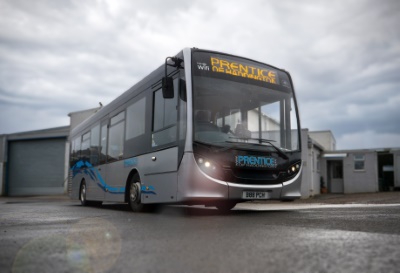 Prentice continued: “There have been other benefits, too. The buses are much smoother and easier to drive. It’s like driving an automatic car, which makes a big difference, particularly in stop-start traffic. Anything we can do to make life easier for our drivers is better for everyone.”
Prentice continued: “There have been other benefits, too. The buses are much smoother and easier to drive. It’s like driving an automatic car, which makes a big difference, particularly in stop-start traffic. Anything we can do to make life easier for our drivers is better for everyone.”
Prentice also anticipates the working life of the vehicles will extend beyond the current duration of around 15 years because of the replacement with new, exceptionally durable xFE transmissions.
The buses were previously upgraded to the Euro VI emissions standard using funding from Transport for Scotland, and the company is keen to keep them operational for as long as possible.
“Buses operating in both traffic-dense city routes and lower speed rural routes present special challenges for any transmission, but they’re ideal applications for our xFE technology,” said Jade Noble, Allison Transmission OEM account manager and area sales manager, UK and Ireland.
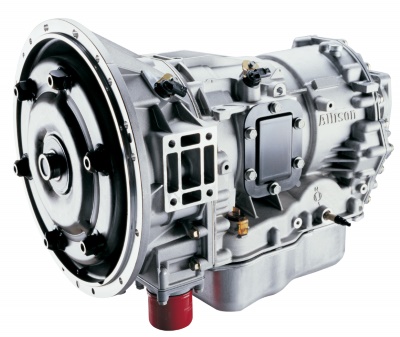 “As well as helping operators to reduce emissions and squeeze more value from every tank of fuel, xFE provides all the performance, reliability, durability and productivity they’ve come to expect from Allison.”
“As well as helping operators to reduce emissions and squeeze more value from every tank of fuel, xFE provides all the performance, reliability, durability and productivity they’ve come to expect from Allison.”
xFE transmissions are designed to lock up at lower speeds, specifically for the constant gear shifting and lower average speeds of bus fleets. This means lock-up happens significantly earlier and vehicles run longer where they are most efficient, producing exceptional fuel savings and vehicle handling.
Allison Transmission has also recently reported that its 3000 xFE and 3200 xFE transmissions have delivered on a promise of fuel savings for waste specialist Biffa, in trials on a pair of refuse collection vehicles that indicated a reduction in diesel consumption of almost five per cent.
In addition to the transmissions enabling earlier lock-up than standard counterparts, the double overdrive ratios in the fifth and sixth gears are also optimised, resulting in an improved ratio spread of 11 per cent.
These new features target improvements in fuel economy and exhaust particulates. Earlier lock up reduces transmission power losses from the torque convertor, reducing heat from the powerpack and allowing the truck’s engine to operate at lower rpm for a given road speed. The optimised overdrive gears reduce the engines cruise rpm for further fuel consumption and exhaust emissions improvements.
Many refuse trucks operate in low speed urban areas where air quality is at its most critical. The xFE series is designed to help address these ongoing concerns and improve operators’ return on investment. Further fuel savings come from Allison’s FuelSense 2.0 software and electronic control system, which is installed as standard on the xFE transmissions.
The 12-month UK trial incorporated 24 months of data, involving removing the standard Allison transmissions from two Dennis Eagle Elite 26-tonne trucks operated by Biffa on commercial waste collection duties and replacing them with the xFE equivalents.
Operating on identical routes to the trucks with the standard Allison transmission throughout the West Midlands and the Wirral, and on a variety of duty cycles, the trucks with the Allison xFE transmissions returned an average fuel saving of 4.8 per cent compared with their previous performance.
The results support the theoretical CO2 emissions saving calculated using the European standard VECTO fuel consumption tool of up to 3.7 percent on the Municipal Utility cycle when compared to the Allison 3000 Series close-ratio transmission, says the manufacturer. This provides an essential carbon reduction option for vehicles within fleets that may be unsuitable for EV alternatives at the current time.
“These compelling results are supported by telematics data from DE Connect, providing CANbus information instantaneously for componentry functionality, vehicle fuel usage, and real-time vehicle tracking information, Allison’ iSCAAN data gathering and analysis tool, and finally our own in-house telemetry engineering system,” said Nathan Wilson, account and area sales manager, UK and Republic of Ireland, Allison Transmission.
“All systems aligned, showing fuel savings from the earlier lock-up in first gear. Achieving this reduces the time the transmission spends in lower gears, rather than torque-converter mode and allows engine speeds to be reduced by 400 rpm at the lock-up point. The xFE’s gear ratios in fifth and sixth are faster than those in the standard Allison transmissions, allowing greater efficiency at higher speeds and lower rpm, again reducing fuel consumption.”
“Biffa is committed to driving sustainable innovation across all its operations and we are proud to be involved in another successful partnership with Alison Transmission,” said Steve Cole, Biffa’s group fleet and procurement director.
“We provided historical data from our telematics system, operated the vehicles on identical routes over a 12-month period and installed additional telematics to validate the findings, which showed material fuel and carbon savings.”





